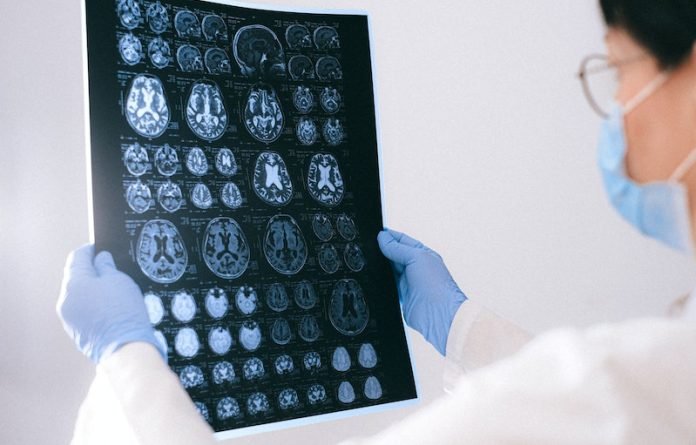
In Alzheimer’s disease, tau and another protein called amyloid-beta build up into tangles and plaques—known collectively as aggregates—causing brain cells to die and the brain to shrink.
This results in memory loss, personality changes, and difficulty carrying out daily functions.
In a study from the University of Cambridge, scientists used human data to quantify the speed of different processes that lead to Alzheimer’s disease.
They found that instead of starting from a single point in the brain and initiating a chain reaction that leads to the death of brain cells, Alzheimer’s disease reaches different regions of the brain early.
How quickly the disease kills cells in these regions, through the production of toxic protein clusters, limits how quickly the disease progresses overall.
The results could have important implications for the development of potential treatments.
In the study, researchers examined post-mortem brain samples from Alzheimer’s patients, as well as PET scans from living patients, who ranged from those with mild cognitive impairment to those with full-blown Alzheimer’s disease.
The team found that the mechanism controlling the rate of progression in Alzheimer’s disease is the replication of aggregates in individual regions of the brain, and not the spread of aggregates from one region to another.
The results open up new ways of understanding the progress of Alzheimer’s and other neurodegenerative diseases, and new ways that future treatments might be developed.
For many years, the processes within the brain which result in Alzheimer’s disease have been described using terms like ‘cascade’ and ‘chain reaction’.
It is a difficult disease to study since it develops over decades, and a definitive diagnosis can only be given after examining samples of brain tissue after death.
For years, researchers have relied largely on animal models to study the disease. Results from mice suggested that Alzheimer’s disease spreads quickly, as the toxic protein clusters colonize different parts of the brain.
This is the first time that human data has been used to track which processes control the development of Alzheimer’s disease over time.
The researchers say their methodology could be used to help the development of treatments for Alzheimer’s disease, which affects an estimated 44 million people worldwide.
If you care about Alzheimer’s disease, please read studies about daytime napping strongly linked to Alzheimer’s disease, and how to treat mild to moderate Alzheimer’s disease.
For more information about brain health, please see recent studies about alternative drug strategy against Alzheimer’s disease, and coconut oil may help improve cognitive function in Alzheimer’s disease.
The study was published in Science Advances and conducted by Dr. Georg Meisl et al.
Copyright © 2022 Knowridge Science Report. All rights reserved.



